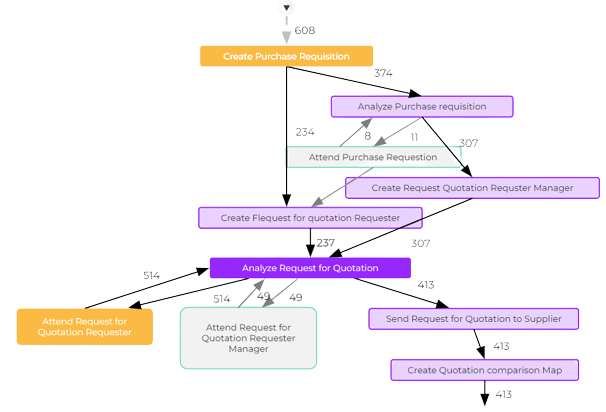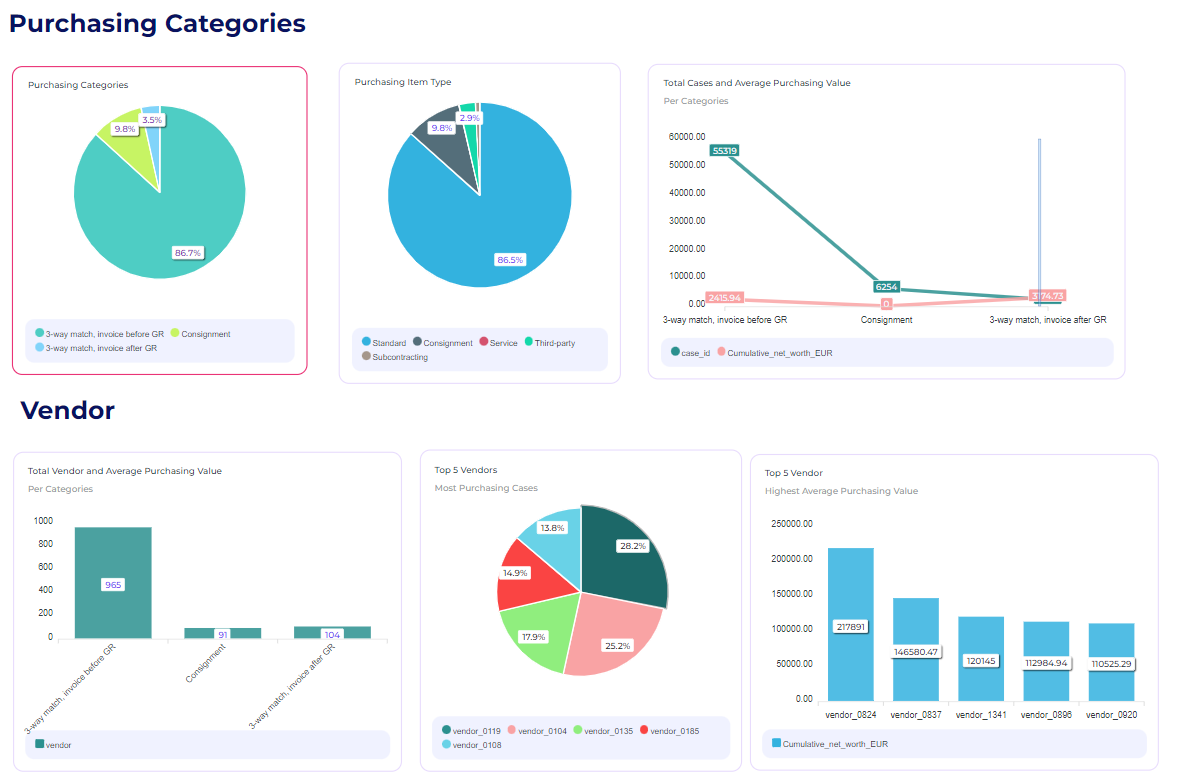Introduction to Process Mining
What is Process Mining?

Process Maps of a Business Process
Process mining is a data-driven methodology for visualizing, analyzing, and improving business processes. It draws insights from event logs and other data sources. It gives a thorough understanding of how processes actually work by concentrating on discovering, monitoring, and optimizing process flows in real time.
Why Process Mining?
https://www.youtube.com/watch?v=ML4LRr1glfU&t=7sVideo credit: https://www.processmining.org/
Use case Example
To further understand how process mining can help organizations improve their process, let’s see this use case example.
A Southeast Asia Manufacturing Company

Manufacturing company (example)
Janice is the business analyst for a manufacturing company based in SEA. As a manufacturing company, there is a lot of business process that is completed every day, such as procure-to-pay, order-to-cash, account payable, etc.
As a business analyst, Janice is responsible to monitor and make sure that every process is completed according to the standard and as smooth as possible. To do that, she chooses to implement process mining.
Importing Event Log Data

Event Log Data
Before starting the analysis, Janice needs to prepare her event log data. Event data is commonly stored in tables, CSV files (Comma Separated Values), and spreadsheets (like Excel files), where each row or column represents an event. There are 3 main attributes required in your data:
Case Id: Unique identifier of each case in a process.
Events: An activity completed in a single case Id. Each can have multiple Events.
Timestamps: When activity is performed in the system. Event log data can have 2 timestamps - a start (when an event begins) and an end (when it's completed).
Process Discovery
Process Maps
After importing the data, process mining will reveal process maps, which are the sequences of activities detected in the data. This is the reality of the process and oftentimes, it deviates from the perceived process.
Learn more about Process Discovery here.
https://www.youtube.com/watch?v=sR9Z3CcE34YVideo credit: https://www.processmining.org/
Check Compliance
Variants detected for checking compliance
After finding out the process maps, the next step is checking compliance. In this step, Janice will make sure that each variant (sequence of activity) complies with the standards. If there are unusual variants or process maps, Janice needs to investigate that further because it could be a sign of inefficiency or even fraud.
Learn more about Compliance/Conformance Checking here.
https://www.youtube.com/watch?v=zh42K9XIhLUVideo credit: https://www.processmining.org/
Performance Analysis

Bottlenecks in process maps
Janice could also discover various bottlenecks and inefficiencies with process mining techniques. This analysis can be a starting point for business process optimization, automation, or reengineering. Common process mining tools also offer business intelligence features such as data visualization to better understand the performance of the data.

Dashboard and Data visualization
Learn more about Performance Analysis here.
https://www.youtube.com/watch?v=-LE4t8HON90Video credit: https://www.processmining.org/